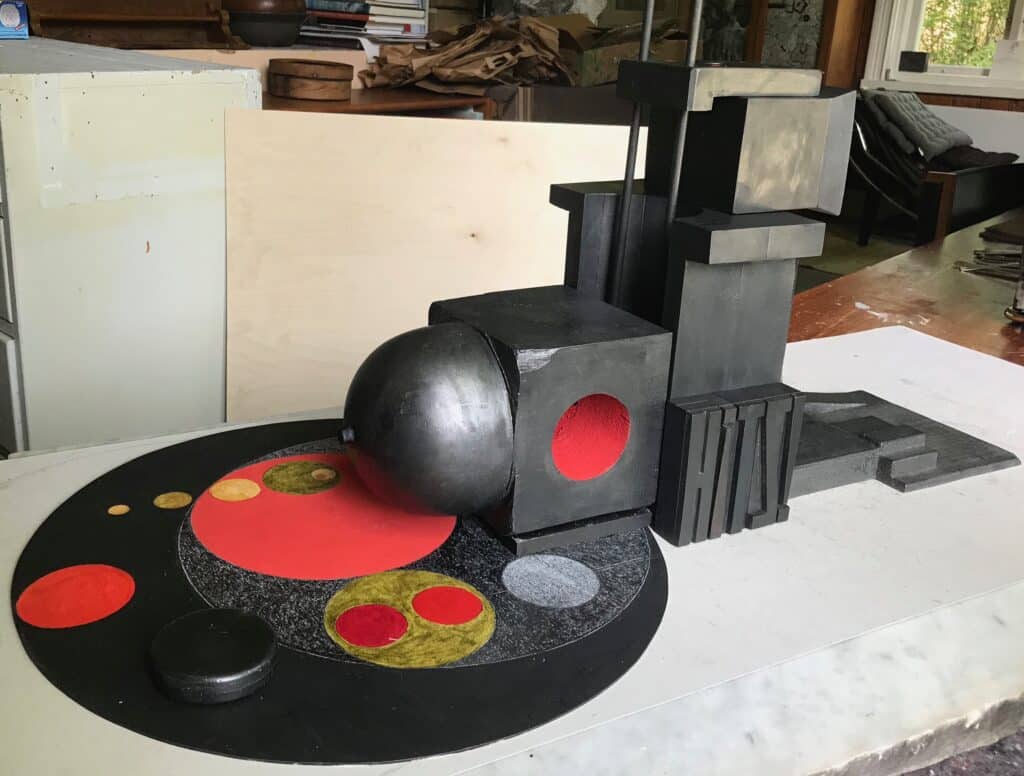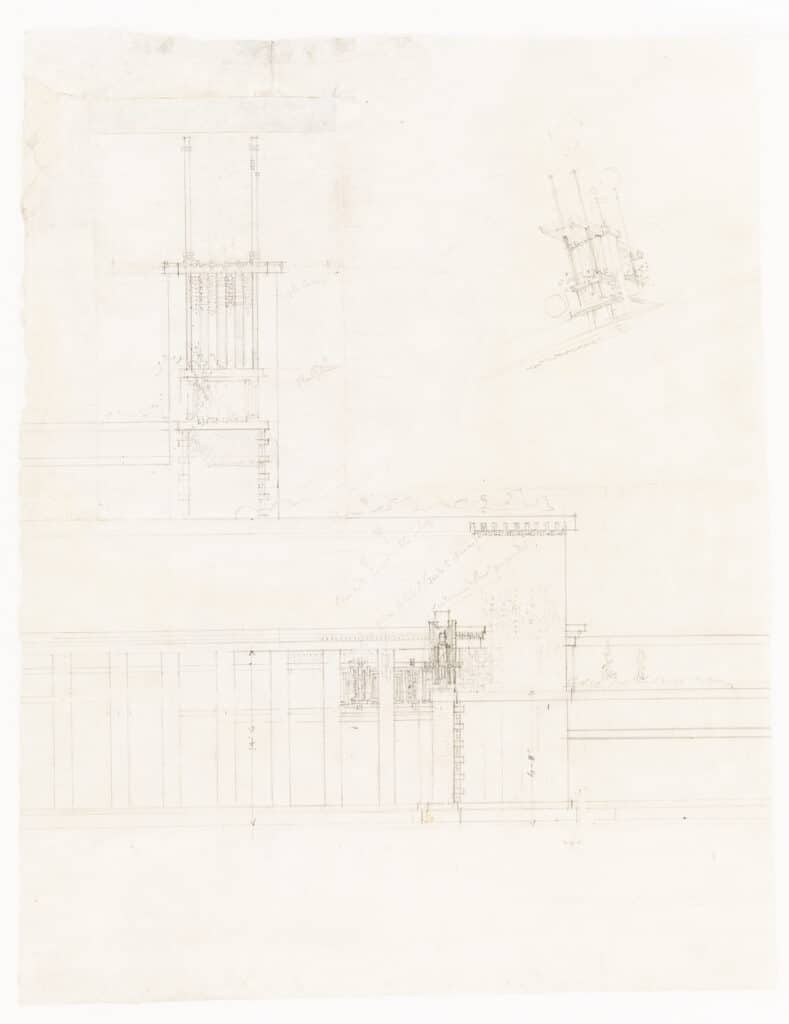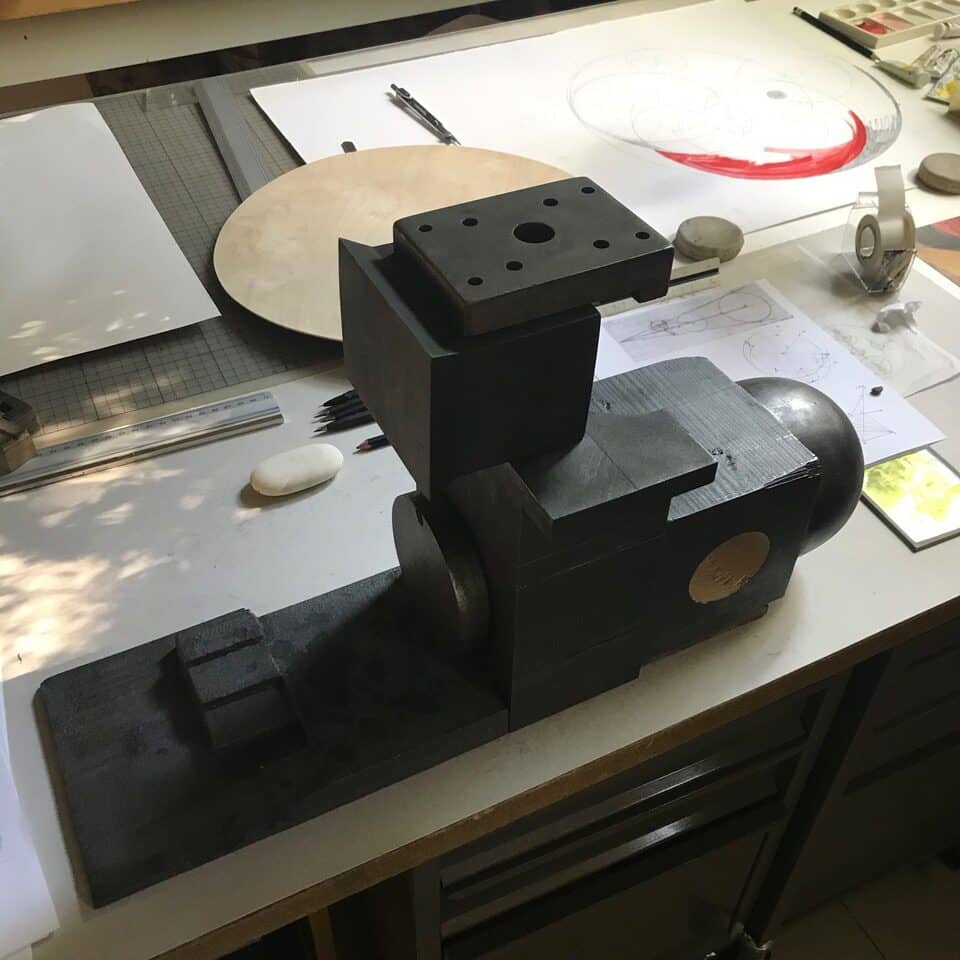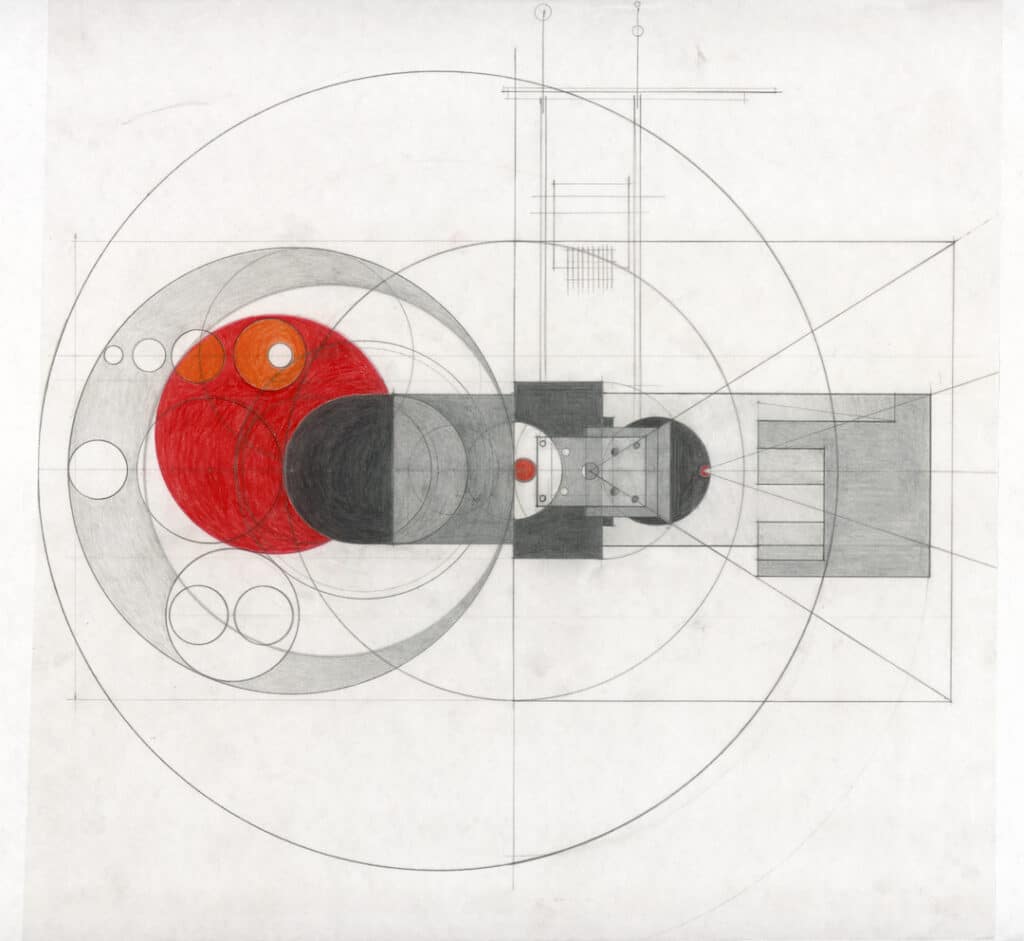Startha Éagsula: Elizabeth Hatz on Frank Lloyd Wright

a vanished garden
the oriental plan eclipses an obsession with circles
all spaces on their way to evaporate
any moment
the terrible weight of void implodes into a dome turned sideways
on its way down, breast-feeding earth
midway of life – garden of death
light words lift like invisible balloons
the perspective of cantilevered canopies is relentless
in heavy suspense
the beer is poured
the froth of days
charred into a solid that is empty
yet endless horizontality remains
in the memory of ground
celebrated by frail budding flowers
while they rise into the air

The FLW drawing is light and delicate. A small perspective sketch to test the design of the tower captures the spirit of festivity; thin poles with balloons elongate the weightless structure, engaging the sky.
Midway Gardens (1914–29) was an organised maze of terraces in a gigantic brick and concrete infrastructure for leisure; an alteration of ground into galleries, arcades, balconies, promenades, platforms and belvederes in a repetitive and luscious order, descending towards a semi-circular band shell. A palace ‘garden’ for fun, drink and music, with vegetation confined to thin garlands like icing on a cake. A fantasy dream of amusement and folly.
The excessively ambitious structure’s life was abruptly ended. Even more violently, was the life of FLW’s love, Mamah Bouton Borthwick, and her two children, as well as Emile Brodelle and three staff at Taliesin, in an axe bloodshed and fire, just weeks after the inauguration.
As he boarded the train for Spring Green to bury his great love, Wright’s personal involvement with the completion of Midway Gardens virtually ended. (Paul Kruty, 1998)
The model was made directly from impressions of this sketch and thoughts around the summer months of 1914 with the outbreak of the First World War.
An architectural drawing is a projection – forward – but here also propelling a projection back. It presents something unfinished, an attempt and a wish, an energy, a mental build in a feverish motion. This particular drawing is light, exact but almost frail, yet possesses an irresistible energy and a dreamlike attraction. The seduction was immediate and left only one option; to postpone drawing and work directly in model.
In Midway Gardens architecture intersects life, drawing intersects history, energy intersects death.
Mamah BB was key to introducing Ellen Key’s radical writings to the American readers, in translation from Swedish. Just days or weeks after Mamah’s terrifying end, my grandfather, a young officer in the Austrian army dies against the Russians in the Battle of Galicia. Outnumbered, old fashioned, inappropriately prepared and badly equipped on their handsome horses and with their slender sabres. I owe my existence to his death, without which my father would not have met my mother. History intersects fate.


Frank Lloyd Wright went on working – but his designs turned more solid, like massive archaic graves. Midway Gardens was finished with its murals, carpets and decorations, beer was poured joyfully under the spindels. The project was grand, exotic and marvellous.
And short-lived.
Architecture as relentless reconstruction. Of dreams – of losses.
The bulging dome turned on its side, on its way down – is a slaughtered model of Tempietto, re-used, and like a large breast – mother of forms – a fallen cathedral, burnt out, charred. Its counterweight is the projecting canopies, towards infinite self-mirroring architectural dreams. They intersect midway in a heavy void.
The model is a nature morte, a construction of fragments into a new whole, derived from the drawing.
All its materials and parts were sourced in my studio, altered and re-used.
The drawings became ways of thinking and testing the implications of the physical relations.
This text has been excerpted from Startha Éagsula / Alternative Histories (2020), a companion catalogue to Alternative Histories (2019) and published to accompany the third installation of Alternative Histories at the Irish Architectural Archive.
Startha Éagsula / Alternative Histories is now available to purchase from Drawing Matter’s bookshop, here.

– Nicholas Olsberg